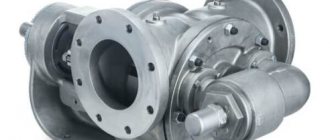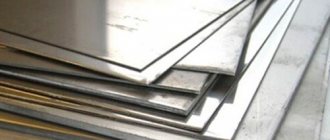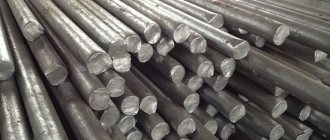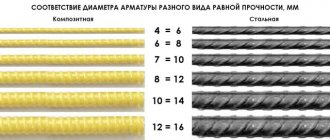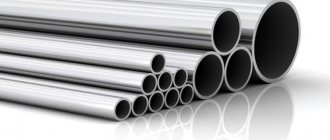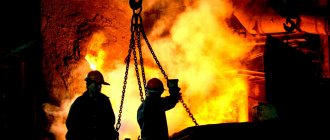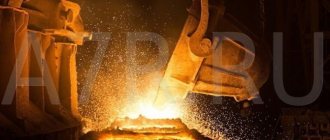AISI 304 stainless steel belongs to one of the most popular 300 series on the Russian market. In an alloy of 17.5% chromium and 8% nickel, these components create a reliable oxide layer on the surface and make the metal non-magnetic. Prefabricated and welded structures, parts of pipelines, and various equipment are made from this material. The characteristics of this rolled metal allow it to be used very widely.
Possible applications:
- containers for transportation and storage of food liquids (milk, beer, wine);
- equipment for food production, public catering organizations;
- kitchen utensils, cutlery;
- heat exchangers;
- couplings, retorts, pipes;
- ventilation systems, chimneys;
- medical equipment;
- decorative elements (external or internal), furniture, architectural details;
- pipes;
- installations in chemical, textile, pharmaceutical, paper factories;
- welded metal structures.
Characteristics of steel grade AISI 304 / SS 304
| Standard | ASTM A182 - Standard Specification for Forged or Rolled Pipe Flanges, Forged Fittings, Valves, and Alloy and Stainless Steel Parts for High Temperature Service ASTM A213 - Standard Specification for Seamless Boiler, Superheater, and Heat Exchanger Tubes of Ferritic and Austenitic Steels ASTM A240 - Standard Specification for Chrome- and Nickel-Chrome, Chrome- and Manganese-Nickel Stainless Steels for Plate, Sheet, and Strip for Pressure Vessels and General Applications ASTM A312 - Standard Specification for Seamless, Welded, and Intensive Cold Worked Austenitic Stainless Steel Pipe | ||||||
| Classification | Stainless steel | ||||||
| Application | Sheets, pipes, profiles | ||||||
| Other names | UNS | S30400 | |||||
| USA (ASTM A167) | Sheet metal | A167 304 | |||||
| USA (ASTM A182) | Forged and rolled flanges | A182 F304 | |||||
| USA (ASTM A213) | Seamless pipes | A213 TP304 | |||||
| USA (ASTM A240) | Flat rolled products | A240 Type 304 | |||||
| USA (ASTM A271) | Seamless distillation pipes | A271 304 | |||||
| USA (ASTM A312) | Seamless pipes | A312 TP304 | |||||
| USA (ASTM A851) | Welded condenser pipes | A851 TP304 | |||||
AISI 304 steel is the most popular grade of stainless steel. Increased demand and widespread use is due to its versatility. AISI 304 steel has high corrosion resistance in aggressive environments, high oxidation resistance and excellent low-temperature properties.
It is worth noting that AISI 304 stainless steel is resistant to the negative effects of water (salt, fresh, tap) and acid solutions in high concentrations (acetic, formic, nitric).
The price of aisi 304 is quite affordable, which is another one of its advantages.
Welding
Austenitic stainless steels, which include AISI 304, are considered the most suitable for welding due to their high fusibility. However, this procedure must maintain corrosion resistance and prevent cracking.
Depending on the welding method, various technologies are used. When using autogen, “stainless steel” fuses well without the use of additional additives. If, for example, an AISI 304 pipe is welded electrically, it is advisable to use the additive and electrode from AISI 308 steel. The filler material can be made from Russian steel 04Х19Н9. For grade 304 L, additive 308 L with a rutile acid shell (AC/DC) is respectively used.
After welding large sections, it is recommended to anneal the seam to increase corrosion resistance (this is not necessary for subclass 304 L). If it is impossible to organize a heat treatment procedure in the installation area, it is better to abandon 308 steel altogether, replacing it with AISI 321.
Chemical composition in % of AISI 304 steel
| C | Mn | P | S | Si | Cr | Ni | Fe |
| <0,08 | <2,0 | <0,045 | <0,03 | <1,0 | 18,0-20,0 | 8,0-10,5 | Rest |
SS304 stainless steel is alloyed with nickel, manganese, copper and chromium, which provides it with an austenitic structure, increased strength and resistance in corrosive environments. Short designation AISI 304 – 18 Cr-8 Ni
.
Compliance with European steel standards
304 1.4301 X2CrNi18-10 304L 1.4306 X2CrNi19-11 304L 1.4307 X2CrNiTi18-10
316L 1.4404 X2CrNiMo17-12-2 316L 1.4435 X2CrNiMo18-14-3 3 16L 1.4571 X6CrNiMoTi17-12-2
Steel A2 (AISI 304 = 1.4301 = 08Х18Н10) – non-toxic, non-magnetic, non-hardening, corrosion-resistant steel. It is easy to weld and does not become brittle. May exhibit magnetic properties as a result of mechanical processing (washers and some types of screws). This is the most common group of stainless steels. The closest analogues are 08Х18Н10 GOST 5632, AISI 304 and AISI 304L (with reduced carbon content).
Performance at elevated temperatures
| Temperature, °C | 600 | 700 | 800 | 900 | 1000 |
| Tensile strength, MPa | 380 | 270 | 170 | 90 | 50 |
| Temperature, °C | 550 | 600 | 650 | 700 | 800 |
| Yield strength, MPa | 120 | 80 | 50 | 30 | 10 |
Corrosion resistance in acidic environments
| Temperature, °C | 20 | 80 | ||||||||||
| Concentration, % by weight | 10 | 20 | 40 | 60 | 80 | 100 | 10 | 20 | 40 | 60 | 80 | 100 |
| Sulfuric acid | 2 | 2 | 2 | 2 | 1 | 0 | 2 | 2 | 2 | 2 | 2 | 2 |
| Phosphoric acid | 0 | 0 | 0 | 0 | 0 | 2 | 0 | 0 | 0 | 0 | 1 | 2 |
| Nitric acid | 0 | 0 | 0 | 0 | 2 | 0 | 0 | 0 | 0 | 0 | 1 | 2 |
| Formic acid | 0 | 0 | 0 | 0 | 0 | 0 | 0 | 1 | 1 | 2 | 1 | 0 |
0
= high degree of protection (corrosion rate does not exceed 100 mm/year);
1
= partial protection (corrosion rate ranges from 100m to 1000 mm/year);
2
= no protection (corrosion rate exceeds 1000 mm/year).
Heat treatment
The peculiarity of the internal crystal lattice of AISI 304 is such that heat treatment of steel does not improve its physical characteristics. However, firing is still carried out to relieve surface tension, which provokes the formation of cracks. Products are heated to a temperature threshold of 1010-1120 °C and quickly cooled at 816-427 °C to avoid precipitation of chromium carbides.
Scope of application AISI 304
Stainless steel AISI 304 (18 Cr-8 Ni), due to its high resistance to oxidation and high temperatures, has found wide application:
- in the chemical and pharmacological industry;
- in the food, dairy and brewing industries;
- in medicine (surgical equipment, injection needles);
- in the production of ship equipment and fasteners for nuclear ships;
- in rolled metal (pipes, angles, sheets, tapes, hexagons);
- in the oil (filter screens for wells) and mining industries;
- in the production of equipment for working under conditions of chemical exposure;
- in the construction of structures for which strength and long service life are important;
- in the textile and paper industry.
In addition, due to its excellent technical parameters, hygienic indicators and pleasant aesthetic appearance, 304 steel is used in the manufacture of kitchen furniture and cutlery; containers for storing liquid and dry substances.
AISI 304 stainless steel is used in the production of cooling coils, cryogenic vessels, refrigeration equipment, sanitary fittings, pressure vessels, etc.
Welding
Stainless steel aisi 304 / SS 304 / 18 Cr-8 Ni is easily welded by all methods. Subsequent heat treatment is only necessary if there is a risk of intergranular corrosion. It is carried out at 1050-1150°C, the seam must be cleaned of the resulting scale and passivated with a special paste.
Analogs
In terms of composition and physicochemical properties, the Russian analogue 08Х18Н10 (former designation 0Х18Н1) most closely matches AISI 304 steel. It allows a slightly lower chromium content (17-19%) and a slightly higher nickel content (9-11%). According to the European Union classification, the actual analogue is grade 1.4301 DIN (X5CrNi18-1).
There are two subclasses of the AISI brand: 304 H and 304 L. The first has a higher carbon content, the second has a lower carbon content. Steel 304 L is close in characteristics to Russian 03Х18Н11.
Heat resistance
AISI 304 has good oxidation resistance at temperatures up to 870 °C, and during long-term use up to 925 °C.
However, prolonged exposure to temperatures between 425 and 860 °C is not recommended if corrosion resistance in an aquatic environment is required. In this case, AISI 304L steel due to its resistance to carbide precipitation.
In cases where high strength is required at temperatures from 500 °C to 800 °C, it is better to use AISI 304H steel . This material will remain corrosion resistant in water longer.
Physical properties of steel
| Characteristic | Meaning | Note |
| Density | 7.8 g/cm. cube | |
| Brinell hardness | 123 | |
| Hardness, Knupu | 138 | |
| Hardness, Rockwell B | 70 | |
| Hardness, Vickers | 129 | |
| Tensile Strength, Ultimate | 505 MPa | |
| Tensile strength, yield | 215 MPa | |
| Plastic | 70% | H 50 mm |
| Elastic modulus | 193 - 200 GPa | |
| Poisson's ratio | 0,29 | |
| Sharpie | 325 J | |
| Shear modulus | 86 GPa | |
| Electrical resistance | 7.2e-005 ohm-cm | at 20 °C; 1.16E-04 at 650 °C |
| Magnetic permeability | 1,008 | at room temperature |
| KTE, linear 20 °C | 17.3 µm/(m K) | |
| KTE, linear 250 °C | 17.8 µm/(m K) | |
| KTE, linear 500° C | 18.7 µm/(m K) | |
| Specific heat | 0.5 J/(g K) | |
| Thermal conductivity | 16.2 W/(mK) | |
| Melting temperature | 1400 - 1455 °C | |
| Solidus | 1400° C | |
| Liquidus | 1455 °C |
Main Applications
This type of steel is used in industry. It is used to create elements for the food industry and chemical engineering. In addition, it is possible to create pipelines and boilers of various purposes and sizes. With good weldability, this type of material is also suitable for creating high-quality welded structures.
One of the features of this type of product is a good level of protection against intercrystalline corrosion. Therefore, the material is used when this parameter comes to the fore.
Features of material corrosion resistance
AISI 304L steel resists various types of corrosion, including high resistance to wet corrosion and those areas where intercrystalline surface corrosion can potentially develop.
Guaranteed protection against surface damage largely determined the area of use. For example, the material tolerates interaction with environments often created by food products, it is impervious to dilute alkaline and organic acids (subject to ambient temperature). In addition, steel can withstand exposure to various organic environments, as well as alkaline and neutral salt solutions.
If we talk about environments in which such material can be used without damage, it is worth noting moderately aggressive organic ones. Under conditions of interaction with phosphoric acid, no damage appears on the surface of the steel sheet. It is not recommended to use products of this type if you have to periodically deal with boiling solutions of acids, including sulfuric and hydrochloric. Contact with a solution heated to high temperatures can “wash away” the corrosion-resistant layer from the surface and damage the material.
One of the features of using the material is its low carbon content. This gives it a whole list of positive properties, one of which is good resistance to intercrystalline corrosion.
The weak point of steel is corrosion cracking. This category of material is traditionally highly susceptible to it. The reason is the low concentration of nickel. Thus, high tensile stress, elevated temperatures, and exposure to chlorides increase the risk of corrosion cracking.
When using this type of steel, you should avoid increased stress and deformation. It is especially worth focusing on such indicators if you are performing a molding procedure, rotary drawing, or welding parts.
Below is a table that indicates the level of resistance of the material to corrosion when exposed to various boiling chemical solutions:
Resistant to corrosion in boiling chemicals
| Boiling medium | Metal condition | Corrosion rate (mm/year) |
| 20% acetic acid | Regular metal Welded | <0.01 <0.01 |
| 45% formic acid | Regular metal Welded | 0.4 0.5 |
| 10% sulfamic acid | Regular metal Welded | 1.3 1.4 |
| 1% hydrochloric acid | Regular metal Welded | 2.2 3.6 |
| 20% phosphoric acid | Regular metal Welded | — — |
| 65% nitric acid | Regular metal Welded | 0.2 0.2 |
| 10% sulfuric acid | Regular metal Welded | 16.8 22.3 |
| 50% sodium hydroxide | Regular metal Welded | 1.8 2.2 |
